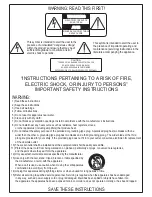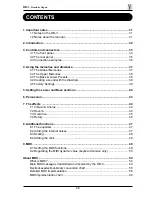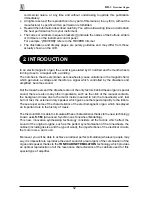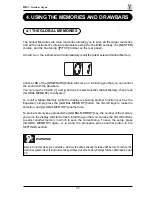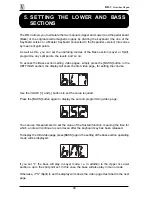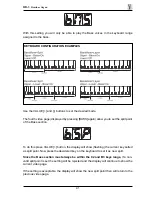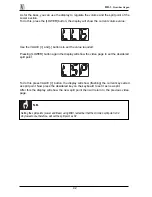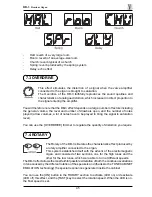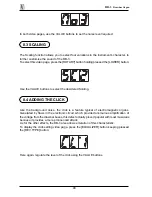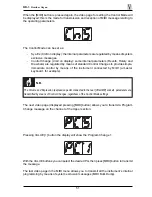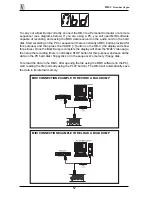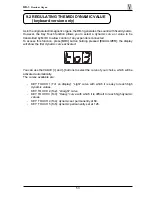
DB-3
Drawbar Organ
4.4 CREATING A SOUND WITH THE DRAWBRAS
The drawbars allow you to set the
timbre of the Upper section.
When completely retracted into
the organ (i.e. when none of the
numbers on the bar can be seen),
a drawbar is deactivated; as it is
gradually pulled out, the various
volume levels (numbered from
one to eight on the bar) of the
harmonic associated to the
drawbar concerned are obtained.
The DB-3 set of drawbars
consists of four white, three black and two brown drawbars. The colour of the drawbar
indicates the type of harmonic, naturally referred to the equal temperament system: white
for the fundamental, second, fourth and eighth harmonic (octave intervals); black for the
twelfth, seventeenth and nineteenth harmonic, and brown for the octave below the
fundamental and its harmonic third.
The drawbars are marked with the length in feet of the church organ pipes used to create
the notes. The pipe which produced the fundamental was 8 feet long; when it was shortened
by one half (4 feet) a note one octave higher was obtained, while if its length was doubled
(16 feet) the octave below was obtained.
To play with the real settings of the drawbars (i.e. not with the Upper Memory settings),
press the [DRAWBARS] button. The LED of the button will come on to confirm the selection.
39
4.5 FACTORY SETTINGS
The Factory Settings procedure allows you to perform a general reset of the instrument
and restore the settings present when it was purchased.
To do this, switch on the DB-3 with the VALUE [+] and [-] buttons pressed; the LED of
[GLOBAL MEMORY] will start to flash and the display will show:
Press [GLOBAL MEMORY] to complete the procedure, or press any other button to annul
the Factory Settings function, leaving the instrument’s current settings unchanged (in the
both case the instrument will perform an automatic reboot to restore the current values of
the parameters).
Summary of Contents for DB-3
Page 1: ...DB 3 User Manual ...
Page 4: ......
Page 10: ...DB 3 Drawbar Organ 3 3 CONNECTION EXAMPLES 36 ...


